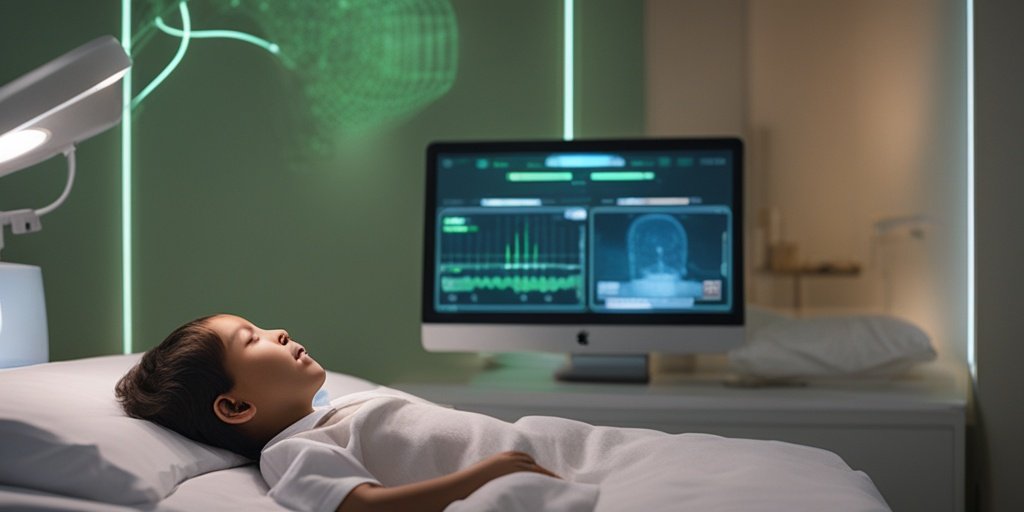⚡ Quick Summary
This article explores the integration of artificial intelligence, biomarkers, and other innovative technologies in the assessment of paediatric obstructive sleep apnoea (OSA). These advancements promise to enhance diagnostic accuracy and address the limitations of traditional screening methods.
🔍 Key Details
- 📊 Focus: Assessment of paediatric obstructive sleep apnoea
- 🧩 Methodologies: Traditional methods vs. innovative technologies
- ⚙️ Technologies discussed: Artificial intelligence, biomarkers, 3D facial photography, wearable technology
- 🏆 Goal: Improve early detection and diagnosis of OSA in children
🔑 Key Takeaways
- 🌟 Traditional methods for diagnosing OSA in children are limited and inconsistent.
- 🤖 AI integration offers a promising alternative for more accurate assessments.
- 🧬 Emerging biomarkers could play a crucial role in the future of OSA diagnostics.
- 📸 3D facial photography is highlighted as a novel approach to enhance diagnostic capabilities.
- ⌚ Wearable technology may facilitate continuous monitoring of sleep patterns.
- 🔍 Comprehensive review of innovative techniques is essential for advancing clinical practice.
- 🌍 Potential impact on paediatric healthcare by improving OSA diagnosis and management.

📚 Background
Obstructive sleep apnoea (OSA) is a significant concern in paediatric populations, often leading to various health issues if left undiagnosed. Traditional assessment methods, including sleep studies and nocturnal oximetry, have been widely used; however, they often lack consistency and accessibility. The need for more effective screening methods has prompted researchers to explore innovative technologies that could revolutionize the assessment of OSA in children.
🗒️ Study
The article provides a comprehensive review of recent advancements in the assessment of paediatric OSA, focusing on the integration of artificial intelligence, biomarkers, and other emerging technologies. The authors discuss the limitations of current methodologies and highlight the potential of these innovations to enhance diagnostic accuracy and facilitate early detection.
📈 Results
The integration of AI and biomarkers has shown promising results in improving the accuracy of OSA assessments. Technologies such as 3D facial photography and wearable devices are emerging as valuable tools for continuous monitoring and early detection, potentially leading to better management of the condition in children.
🌍 Impact and Implications
The findings from this review could significantly impact paediatric healthcare by providing clinicians with more reliable tools for diagnosing OSA. By embracing these innovative technologies, healthcare providers can enhance patient outcomes and streamline the diagnostic process, ultimately leading to improved quality of care for children suffering from OSA.
🔮 Conclusion
The future of paediatric obstructive sleep apnoea assessment looks promising with the integration of artificial intelligence, biomarkers, and other cutting-edge technologies. These advancements have the potential to transform clinical practice, making early detection and accurate diagnosis more achievable. Continued research and development in this field are essential to fully realize the benefits of these innovations.
💬 Your comments
What are your thoughts on the integration of technology in the assessment of paediatric OSA? We would love to hear your insights! 💬 Leave your comments below or connect with us on social media:
The future of paediatric obstructive sleep apnoea assessment: Integrating artificial intelligence, biomarkers, and more.
Abstract
Assessing obstructive sleep apnoea (OSA) in children involves various methodologies, including sleep studies, nocturnal oximetry, and clinical evaluations. Previous literature has extensively discussed these traditional methods. Despite this, there is no consensus on the optimal screening method for childhood OSA, further complicated by the complexity and limited availability of diagnostic polysomnography (PSG). Recent advancements, such as the integration of artificial intelligence, biomarkers, 3D facial photography, and wearable technology, offer promising alternatives for early detection and more accurate diagnosis of OSA in children. This article provides a comprehensive review of these innovative techniques, highlighting their potential to enhance diagnostic accuracy and overcome the limitations of current methods. With an emphasis on cutting-edge technologies and emerging biomarkers, we discuss the future directions for paediatric OSA assessments and their potential to revolutionise clinical practice.
Author: [‘Ohn M’, ‘Maddison KJ’, ‘Walsh JH’, ‘von Ungern-Sternberg BS’]
Journal: Paediatr Respir Rev
Citation: Ohn M, et al. The future of paediatric obstructive sleep apnoea assessment: Integrating artificial intelligence, biomarkers, and more. The future of paediatric obstructive sleep apnoea assessment: Integrating artificial intelligence, biomarkers, and more. 2025; (unknown volume):(unknown pages). doi: 10.1016/j.prrv.2025.01.004